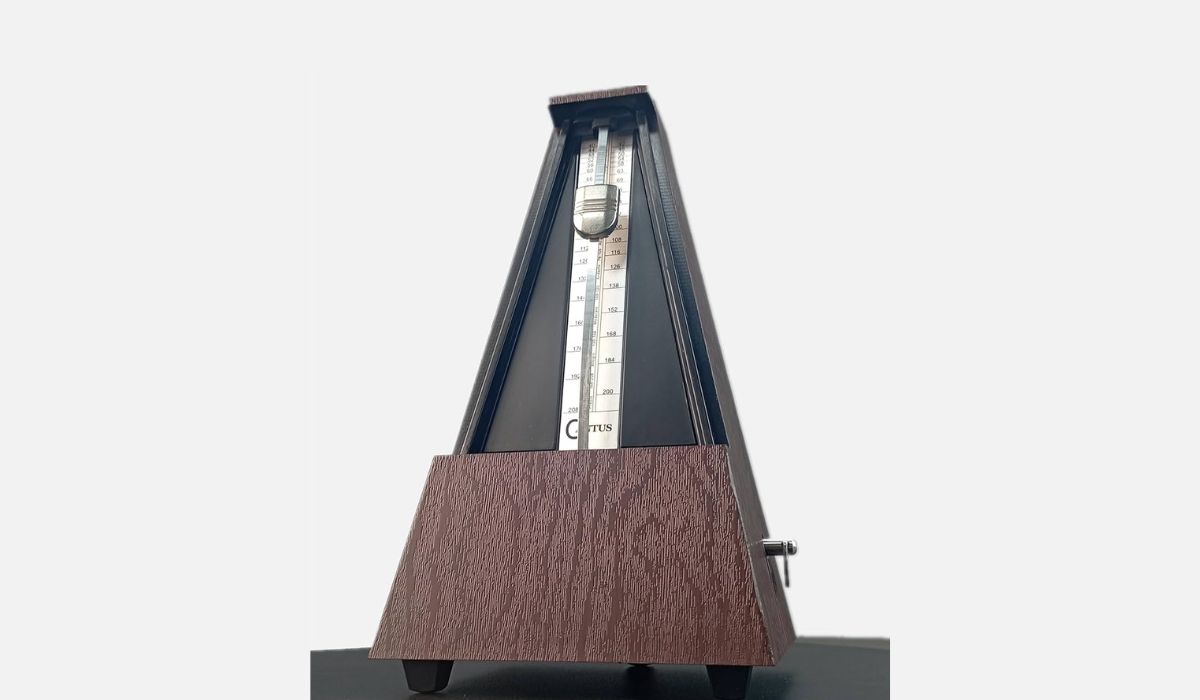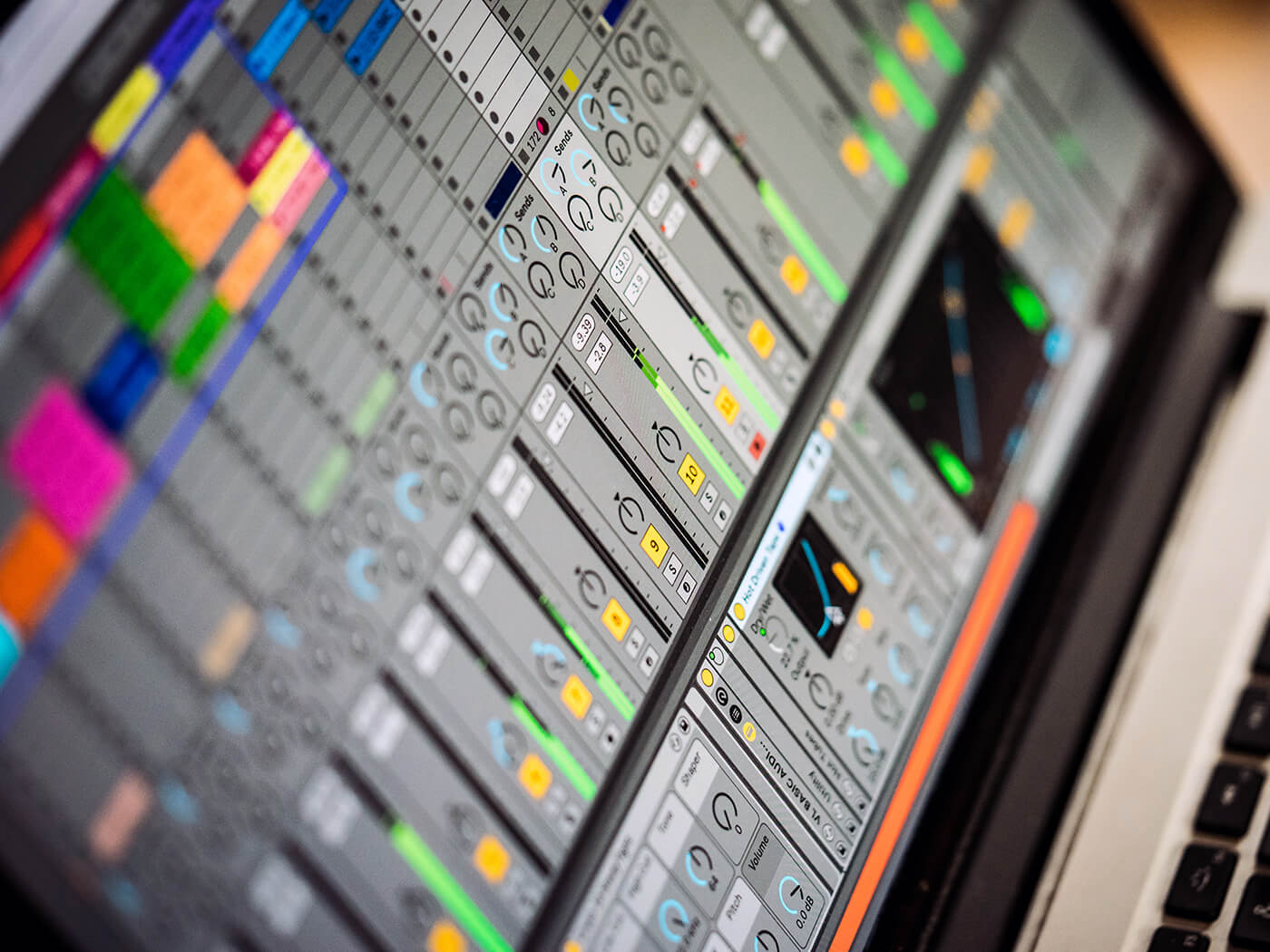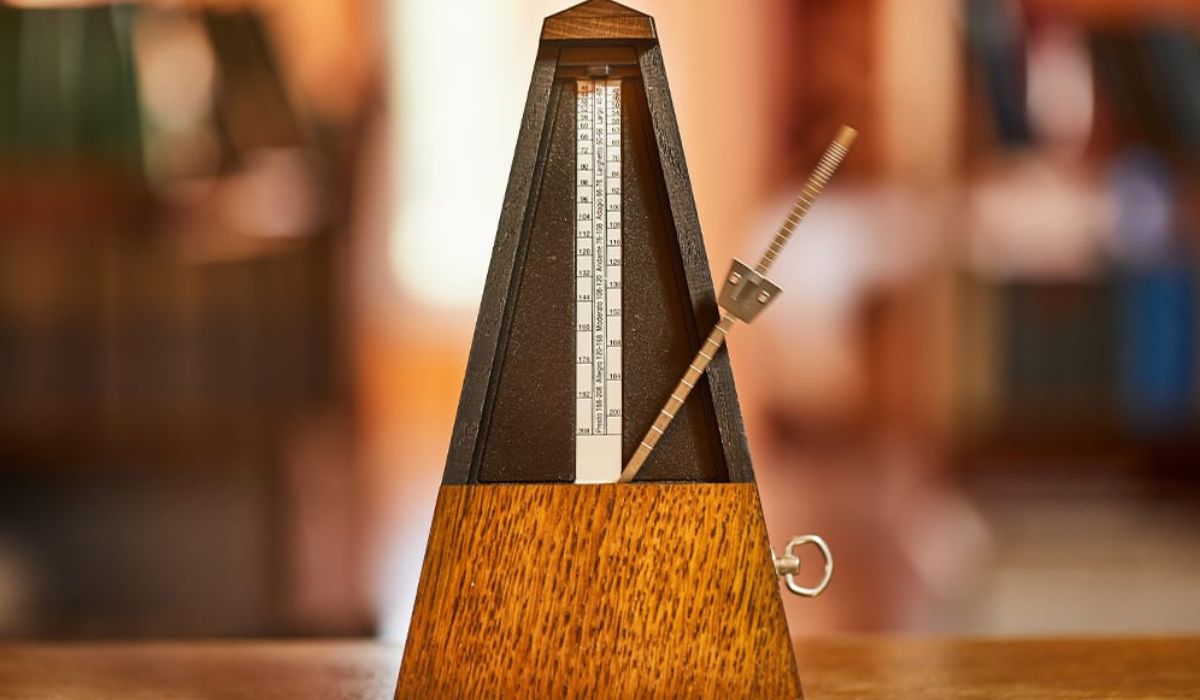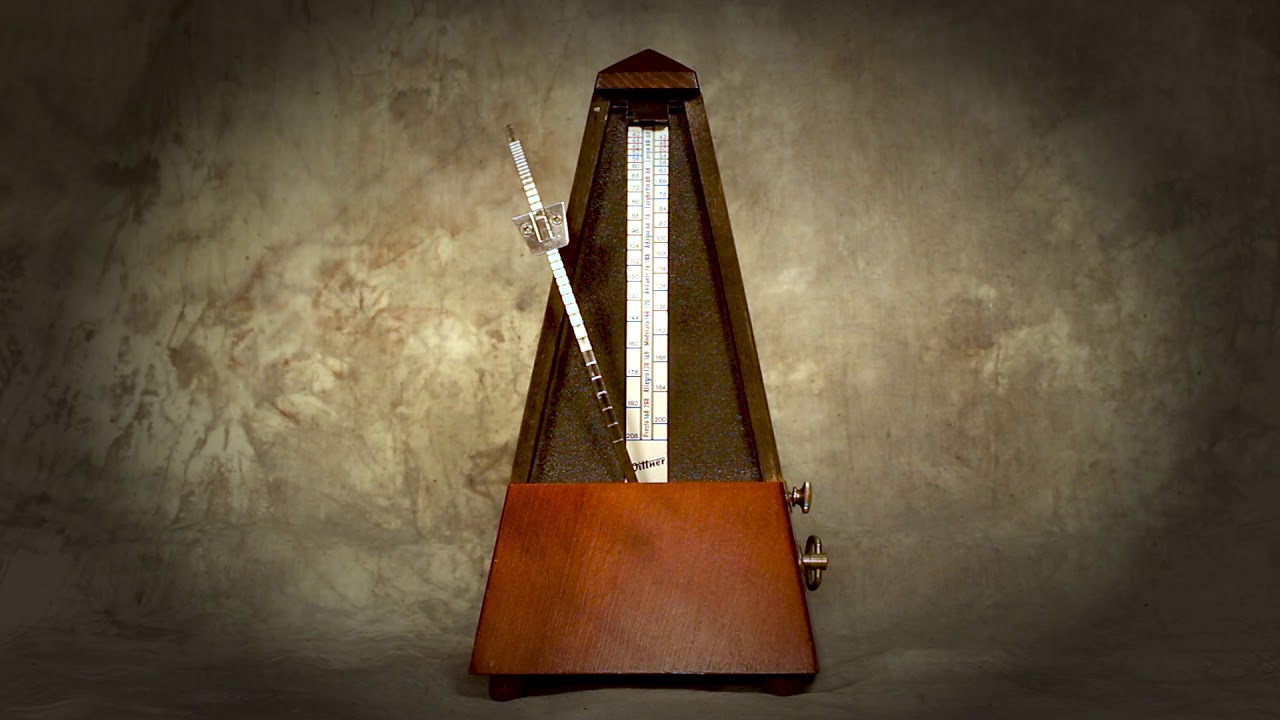Home>Production & Technology>Metronome>How Do You Make Metronome Not Accented


Metronome
How Do You Make Metronome Not Accented
Modified: January 22, 2024
Learn how to make a metronome less accented and improve your timing and rhythm. Discover effective techniques for using a metronome and enhancing your musical performance.
(Many of the links in this article redirect to a specific reviewed product. Your purchase of these products through affiliate links helps to generate commission for AudioLover.com, at no extra cost. Learn more)
Table of Contents
Introduction
Metronome is a valuable tool for musicians to develop and maintain precise timing and rhythm. However, the standard metronome sound can sometimes be too harsh or accentuated, which can interfere with the desired musical expression. If you’re looking to make your metronome less accented and more enjoyable to listen to, you’re in the right place.
In this article, we will explore techniques and strategies to modify the metronome’s accent and create a more subtle and musical rhythmic pulse. We will dive into adjusting the metronome speed, experimenting with different sounds, incorporating subdivisions, and adding dynamics and articulation to the metronome beats.
By employing these techniques, you’ll be able to practice and perform with a metronome that enhances your musicality and offers a more refined experience. So, let’s delve into the realm of metronome customization and learn how to make the metronome not accented!
Understanding the Accented Metronome
Before we discuss how to make the metronome less accented, it’s important to understand what an accented metronome is and why it can be problematic for musicians.
An accented metronome refers to a metronome that emphasizes certain beats more prominently than others. The accent is typically a louder sound or a difference in pitch that occurs on specific beats, such as the first beat of each measure. While this accent can help beginners in maintaining a steady tempo, it can also create a rigid and robotic feel to the music that lacks musical expression.
This accentuation can be particularly challenging for musicians who strive to play with nuanced dynamics and phrasing. It can interfere with their ability to shape the musical phrases and add subtle variations to their playing. Furthermore, in genres where syncopation and off-beat accents are essential, an accented metronome can be counterproductive as it may distract from the intended rhythm.
By making adjustments to the metronome and finding ways to reduce or eliminate the accent, musicians can develop a more malleable sense of time and rhythm. This allows for greater musical expression and the ability to play with a wider range of dynamics and articulations.
Now that we understand the challenges posed by an accented metronome, let’s explore different techniques and strategies to make the metronome less accented and more suitable for musical practice and performance.
Techniques to Make Metronome Not Accented
When it comes to making the metronome less accented, there are several techniques and adjustments you can try. These methods will help you achieve a more subtle and musical pulse that allows for greater artistic expression. Let’s dive into these techniques:
- Adjusting the Metronome Speed: One of the simplest ways to make the metronome less accented is to adjust its speed. Slowing down the tempo can reduce the emphasis placed on specific beats, making the metronome sound more even and flowing. Experiment with different tempos to find the sweet spot that suits your musical needs.
- Using a Gentle Tap or Click: Another technique is to use a softer and gentler tap or click sound on the metronome. Many metronomes have adjustable volume settings or different sound options. Opt for a sound that is less sharp and more subdued to create a more natural and pleasant rhythmic pulse.
- Experimenting with Different Sound Options: Some metronomes allow you to choose from a variety of sound options, such as woodblocks, bells, or even more melodic tones. These alternative sounds can provide a more musical and less accented feel to the metronome beats. Find a sound that resonates with your musical style and preferences.
- Practicing with a Subdivided Beat: Subdividing the beat can also help reduce the accent of the metronome. Instead of following the regular beat clicks, try dividing each beat into smaller sub-beats. This allows you to develop a more nuanced sense of time and rhythm, making the metronome feel less rigid and accented.
- Incorporating Dynamics and Articulation: Finally, incorporating dynamics and articulation in your playing while practicing with the metronome can make the beat feel more musical and expressive. Varying the volume and adding subtle accents or legato phrasing can help you create a natural and flowing rhythm that is less dependent on the metronome’s accentuation.
Remember, it may take some experimentation to find the right combination of techniques that work for you. Don’t hesitate to explore different options and adjust the settings on your metronome to achieve the desired effect.
By implementing these techniques, you can transform your metronome into a versatile tool that helps you develop a more nuanced sense of timing and rhythm, while allowing for greater musical expression.
Adjusting the Metronome Speed
One of the most straightforward techniques to make the metronome less accented is to adjust its speed. By altering the tempo, you can create a more even and flowing rhythm that is less reliant on accentuated beats. Here’s how you can adjust the metronome speed effectively:
Slowing Down the Tempo: Lowering the tempo of the metronome can help reduce the emphasis on specific beats. Start by setting the metronome to a comfortable tempo and gradually decrease the speed until you achieve a more balanced sound. Experiment with different tempos, and find the pace that allows you to play with ease and musicality.
Using a Metronome App or Software: If you’re using a digital metronome, consider using a metronome app or software that offers greater control over the tempo. These tools often allow for fine adjustments, allowing you to find the precise speed that suits your musical needs. Some even offer features like gradual tempo changes or custom tempo maps to create a more organic and natural flow.
Considering the Musical Context: When adjusting the metronome speed, it’s important to consider the musical context in which you’re playing. Different musical genres and styles may require varying tempos. For example, a slower tempo may be more suitable for a ballad, while a faster tempo may be necessary for a lively dance tune. Let the musical genre and expression guide you in finding the ideal metronome speed.
Listening and Feeling the Pulse: As you adjust the metronome speed, listen carefully and try to feel the pulse within yourself. Internalize the rhythm and let it guide your playing, rather than solely relying on the metronome clicks. This will allow you to develop a more intuitive and musical sense of time, regardless of the metronome accentuation.
Practicing with Different Time Signatures: Experiment with different time signatures while adjusting the metronome speed. Different time signatures may require different approaches to accentuation. For example, in 4/4 time, you may try accenting the second and fourth beats to create a more groove-oriented feel. By exploring different time signatures, you can enhance your overall sense of rhythm and reduce dependency on accented beats.
Remember, the goal of adjusting the metronome speed is to find a tempo that allows for a more natural and musical rhythm. Take the time to experiment with different speeds and trust your musical instincts to guide you towards the right tempo for each piece and situation.
Using a Gentle Tap or Click
Another effective technique to make the metronome less accented is to use a gentler tap or click sound. By adjusting the volume or sound options of your metronome, you can create a more subtle and pleasant rhythmic pulse. Here’s how you can achieve a gentler metronome sound:
Adjusting the Volume: Many metronomes offer volume control settings that allow you to adjust the loudness of the click or tap. Lowering the volume can help soften the accent and create a more balanced sound. Gradually decrease the volume until you find a level that is comfortable and pleasing to your ears.
Choosing a Softer Sound Option: Some metronomes provide various sound options beyond the traditional click or tap. These can include softer sounds like woodblocks, bells, or even melodic tones. Experiment with different sound options to find one that is less sharp and accentuated, creating a more musical and enjoyable metronome experience.
Using a Metronome App or Software: If you’re using a digital metronome, explore the options available in metronome apps or software. These tools often offer a wide range of sound options and customization features. You can choose from a variety of click sounds or even import custom sounds to create a gentler and more personalized metronome experience.
Adding a Percussion Pad or Cloth: If your metronome produces a sharp and harsh sound, you can place it on a soft surface, such as a percussion pad or a folded cloth. The padding helps dampen the sound and reduces the accentuation of the metronome beats. This simple trick can go a long way in creating a more pleasant and subdued rhythmic pulse.
Listening to Music as a Reference: Sometimes, it can be helpful to listen to music as a reference while using the metronome. Having a musical context can influence the way you perceive the metronome beats, making them feel more natural and less accented. Play along with recordings or use a metronome feature that allows you to play music in the background to create a more musical and seamless experience.
Remember, the aim is to create a metronome sound that is comfortable and pleasing to your ears while still providing a reliable rhythmic reference. Experiment with different volume levels and sound options to find the balance that works best for you and enhances your musical practice.
Experimenting with Different Sound Options
Another approach to make the metronome less accented is to explore different sound options. While the traditional click or tick sound may be the default setting, many metronomes offer a variety of sounds that can provide a more musical and enjoyable experience. Here are some techniques to help you experiment with different sound options:
Alternative Click Sounds: Many metronomes allow you to choose from a range of click sounds beyond the standard tick. These can include woodblock, cowbell, clave, or even synthesized sounds. Experiment with different options to find a sound that is less accented and more pleasing to your ears. Consider how these sounds fit within the musical context in which you are playing.
Custom Sound Imports: Some digital metronome apps or software allow you to import custom sounds. This provides an opportunity to personalize your metronome experience by using sounds that are unique to you. You can import your own recording of a soft percussive instrument or even a melodic tone that complements your musical style. This customization can help create a metronome sound that is tailored to your needs.
Musical Instrument Sounds: If you prefer a more melodic approach, some metronomes offer musical instrument sounds as an option. These can include piano, guitar, or even orchestral instrument sounds. Using a musical instrument sound as your metronome can bring a different dimension to your practice sessions, making the metronome beats feel less robotic and more connected to the music.
Layered Sounds: Another technique is to layer or combine different sounds together. Some metronomes allow you to play multiple sounds simultaneously, creating a more complex and rich rhythmic texture. This can help mask the accentuated beats and make the metronome sound more natural and flowing. Experiment with layering different sounds to find a combination that works best for you.
Recording Acoustic Instruments: For a truly organic and natural metronome experience, consider recording your own acoustic instrument playing the desired rhythm. You can then use this recording as your metronome sound. This method brings a unique and personal touch to your practice sessions and allows for a more expressive and musical approach to practicing with a metronome.
Remember, the goal of experimenting with different sound options is to find a metronome sound that is less accentuated and more enjoyable for your musical practice. Whether you choose alternative click sounds, import custom sounds, or explore musical instrument options, the key is to find a sound that enhances your musical experience and helps you develop a more fluent and expressive sense of rhythm.
Practicing with a Subdivided Beat
An effective technique to make the metronome less accented is to practice with a subdivided beat. Subdividing the beat allows for a more nuanced sense of rhythm and reduces the emphasis on specific beats. Here’s how you can incorporate subdivisions into your metronome practice:
Divide the Beat: Instead of focusing on the main beats (e.g., quarter notes), divide each beat into smaller sub-beats. For example, if your metronome is set to 60 beats per minute (BPM), you can mentally divide each beat into eighth notes or even sixteenth notes. This allows for a more detailed and fluid understanding of the timing and reduces the accentuation of the metronome beats.
Counting Techniques: Utilize counting techniques such as “1 and 2 and 3 and 4,” where the “and” represents the subdivision between the main beats. By audibly counting the subdivisions while practicing with the metronome, you train your ears to hear and internalize the smaller rhythmic units, resulting in a more natural and less accented feel.
Play Along with Syncopated Patterns: Choose rhythmic patterns that incorporate syncopation and off-beat accents. Syncopated patterns can help you develop a stronger internal sense of rhythm and reduce reliance on the metronome’s accentuation. Play along with these patterns, ensuring that you maintain a consistent pulse with the metronome while emphasizing the syncopated accents.
Gradual Subdivision Increase: As you become more comfortable with subdividing the beat, gradually increase the level of subdivision. For example, if you’ve been practicing with eighth note subdivisions, try moving to sixteenth notes or even thirty-second notes. This challenges your rhythmic precision and further reduces the reliance on accented beats, creating a more fluid and organic rhythmic feel.
Experiment with Different Subdivision Ratios: Depending on the musical style and context, different subdivision ratios may be more appropriate. For example, in jazz, triplets or swung eighth notes may be common, while straight sixteenth notes may be more suitable for classical music. Experiment with different subdivision ratios to find what feels most natural and musical for your desired style of playing.
By practicing with a subdivided beat, you develop a more nuanced and flexible sense of rhythm. This helps you break away from the rigid accentuation of the metronome and enables you to play with greater musical expression and a more natural flow.
Incorporating Dynamics and Articulation
Adding dynamics and articulation to your playing while practicing with the metronome can greatly contribute to making the beat feel less accented. By incorporating expressive elements into your practice sessions, you create a more musical and nuanced metronome experience. Here’s how you can incorporate dynamics and articulation:
Varying the Volume: Experiment with different volume levels while playing along with the metronome. Rather than playing every beat with the same intensity, add subtle variations in volume. For example, you can emphasize the downbeats by playing them slightly louder while playing the offbeats softer. This helps create a more natural and expressive rhythmic feel.
Playing with Articulation: Explore different articulation techniques such as staccato, legato, and accents while practicing with the metronome. By varying the way you attack and release each note, you introduce a sense of musicality and personality to the rhythmic pulse. This also helps to divert attention from the metronome’s accentuation and adds a layer of expressiveness to your playing.
Using Swells and Fades: Another technique is to incorporate swells and fades into your playing. Gradually increase the volume of your notes to create a swell and then decrease the volume for a fade effect. This dynamic control adds depth and musicality to your practice sessions, making the metronome beats feel more like a natural part of the music rather than a rigid framework.
Exploring Rhythmic Variations: While practicing with the metronome, experiment with subtle rhythmic variations. This can include playing certain beats slightly ahead or behind the metronome’s click, adding tasteful syncopations, or improvising small rhythmic fills. These variations help break the monotony of the metronome sound and introduce a more human-like feel to the rhythmic pulse.
Listening and Responding: Finally, listen attentively to the metronome and respond to its beat in a musical and expressive manner. Treat it as a musical partner rather than a strict timekeeper. Become attuned to its nuances and fluctuations, and allow yourself to play with sensitivity and responsiveness. This interaction between you and the metronome can lead to a more organic and less accented rhythmic experience.
By incorporating dynamics and articulation into your practice with the metronome, you infuse a sense of musicality and expression into your playing. This helps shift the focus away from the metronome’s accentuation and allows you to develop a more fluid and musical sense of rhythm.
Conclusion
In conclusion, making the metronome less accented is a valuable pursuit for musicians who seek to infuse their practice sessions with greater musicality and expression. By implementing the techniques discussed in this article, you can transform the metronome into a more versatile tool that enhances your rhythmic abilities and allows for a more natural and enjoyable metronome experience.
Adjusting the metronome speed provides a simple and effective way to reduce accentuation. Experimenting with slower tempos or finding the right pace for the musical context allows for a more balanced and flowing rhythm. Using a gentle tap or click sound, whether by adjusting the volume or exploring different sound options, creates a softer and more pleasing metronome pulse.
Practicing with a subdivided beat helps develop a subtle and nuanced sense of rhythm, reducing reliance on accented beats. Incorporating dynamics and articulation brings musical expression to the metronome beats, allowing for a more personal and dynamic practice experience.
Ultimately, the goal is to create a metronome that blends seamlessly into your playing, connecting you deeply to the music and enhancing your musicality. Remember to experiment, listen attentively, and trust your musical instincts as you navigate the realm of making the metronome not accented.
By incorporating these techniques and strategies into your practice routine, you will develop a more refined sense of timing and rhythm, enabling you to communicate your musical ideas with greater fluidity and expressiveness. So, embrace the possibilities and unleash the full potential of your metronome as a valuable tool on your musical journey.











